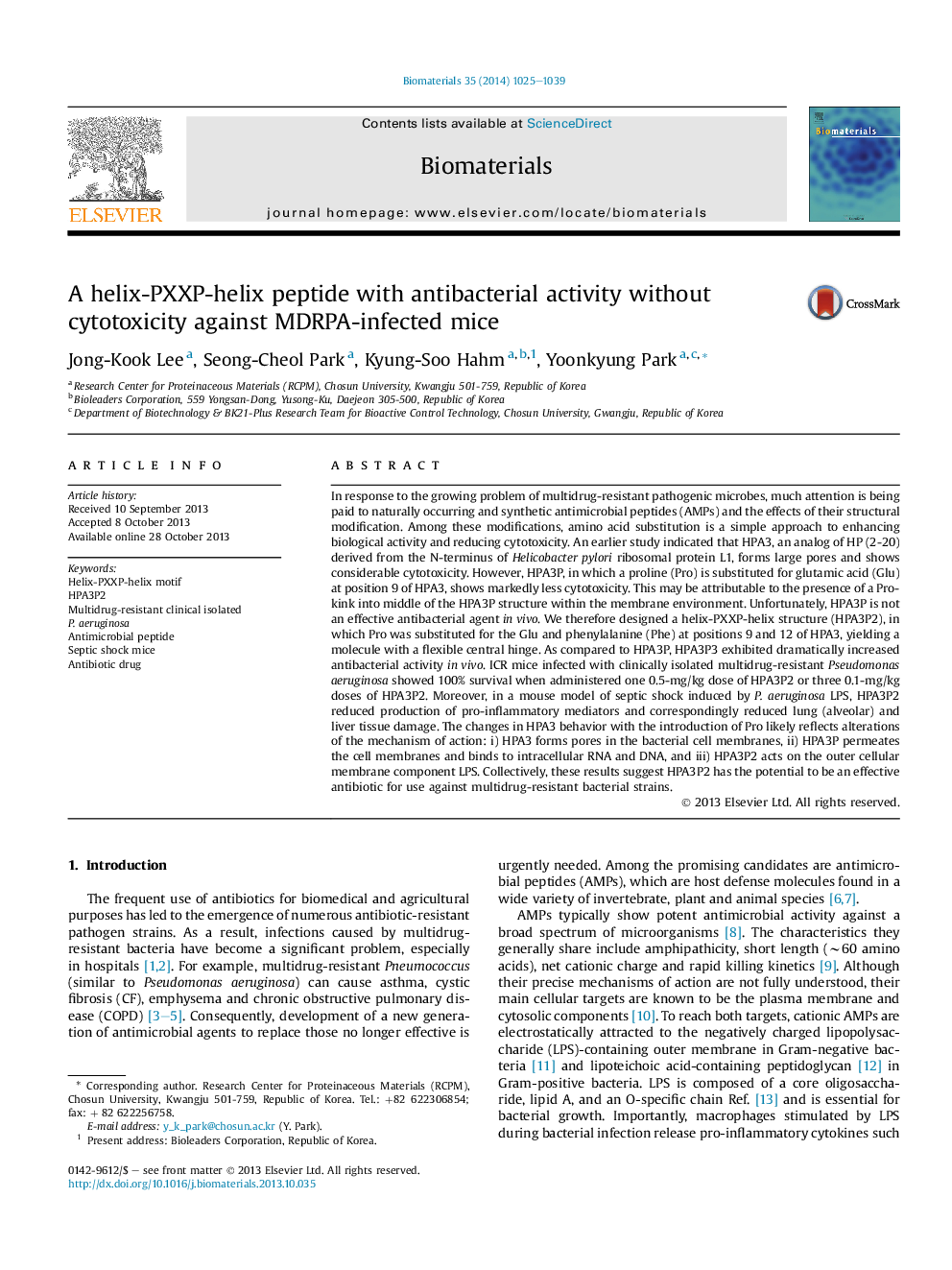| کد مقاله | کد نشریه | سال انتشار | مقاله انگلیسی | نسخه تمام متن |
|---|---|---|---|---|
| 10227697 | 458 | 2014 | 15 صفحه PDF | دانلود رایگان |
عنوان انگلیسی مقاله ISI
A helix-PXXP-helix peptide with antibacterial activity without cytotoxicity against MDRPA-infected mice
دانلود مقاله + سفارش ترجمه
دانلود مقاله ISI انگلیسی
رایگان برای ایرانیان
موضوعات مرتبط
مهندسی و علوم پایه
مهندسی شیمی
بیو مهندسی (مهندسی زیستی)
پیش نمایش صفحه اول مقاله

چکیده انگلیسی
In response to the growing problem of multidrug-resistant pathogenic microbes, much attention is being paid to naturally occurring and synthetic antimicrobial peptides (AMPs) and the effects of their structural modification. Among these modifications, amino acid substitution is a simple approach to enhancing biological activity and reducing cytotoxicity. An earlier study indicated that HPA3, an analog of HP (2-20) derived from the N-terminus of Helicobacter pylori ribosomal protein L1, forms large pores and shows considerable cytotoxicity. However, HPA3P, in which a proline (Pro) is substituted for glutamic acid (Glu) at position 9 of HPA3, shows markedly less cytotoxicity. This may be attributable to the presence of a Pro-kink into middle of the HPA3P structure within the membrane environment. Unfortunately, HPA3P is not an effective antibacterial agent in vivo. We therefore designed a helix-PXXP-helix structure (HPA3P2), in which Pro was substituted for the Glu and phenylalanine (Phe) at positions 9 and 12 of HPA3, yielding a molecule with a flexible central hinge. As compared to HPA3P, HPA3P3 exhibited dramatically increased antibacterial activity in vivo. ICR mice infected with clinically isolated multidrug-resistant Pseudomonas aeruginosa showed 100% survival when administered one 0.5-mg/kg dose of HPA3P2 or three 0.1-mg/kg doses of HPA3P2. Moreover, in a mouse model of septic shock induced by P. aeruginosa LPS, HPA3P2 reduced production of pro-inflammatory mediators and correspondingly reduced lung (alveolar) and liver tissue damage. The changes in HPA3 behavior with the introduction of Pro likely reflects alterations of the mechanism of action: i) HPA3 forms pores in the bacterial cell membranes, ii) HPA3P permeates the cell membranes and binds to intracellular RNA and DNA, and iii) HPA3P2 acts on the outer cellular membrane component LPS. Collectively, these results suggest HPA3P2 has the potential to be an effective antibiotic for use against multidrug-resistant bacterial strains.
ناشر
Database: Elsevier - ScienceDirect (ساینس دایرکت)
Journal: Biomaterials - Volume 35, Issue 3, January 2014, Pages 1025-1039
Journal: Biomaterials - Volume 35, Issue 3, January 2014, Pages 1025-1039
نویسندگان
Jong-Kook Lee, Seong-Cheol Park, Kyung-Soo Hahm, Yoonkyung Park,